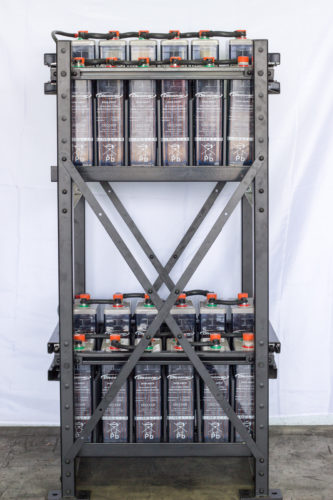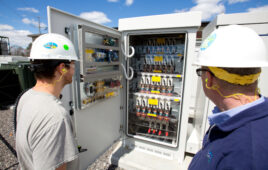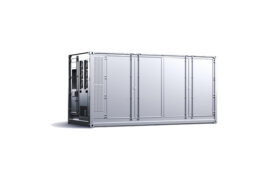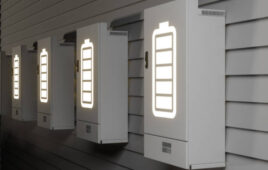Batteries should be regarded as a fuel. They are expendable and have a fixed amount of energy that they can discharge over their limited lifespans.
“Understanding battery chemistry, the leading causes of failure and properly maintaining them will allow the user to maximize the battery’s capabilities,” said Ron Rowe, senior sales engineer at Harris Battery Company.
Two of the most common types of batteries used in solar installations are lead-acid and lithium-ion. Lead-acid batteries are typically declared dead when they can no longer provide 80% of their rated capacity, explained Jim McDowall, business development manager with Saft’s Energy Storage Business Unit. Lithium-ion technologies often age linearly down to 60%.
The decomposition of a battery’s internal components depends on its type. Rowe explained that lead-acid battery deaths manifest themselves in two ways. The first is through gradual degradation of battery capacity through sulfation, a process that results in the buildup of tiny, sulfur-based dendrites in the lower, acidic part of the battery. These dendrites block the transmit of electrons between regions of the active material, causing a reduction of battery capacity. The second manifestation is through catastrophic failure as active material is shed from the plates and causes a breach in the battery case.
The most common cause of death in lithium-ion batteries is wear out due to cycling, or simple old age, McDowall explained. They can also experience failures to electronic components that worsen as those components reach the end of their lives. When lithium-ion batteries die, the structure remains intact but there are gradual changes in the active materials that reduce capacity and increase resistance.
Temperature also largely affects battery life at a component level.
“Heat is the enemy of batteries,” Rowe said. “While a battery in warmer temperatures can produce more energy in the short term, the degradation of the internal components is accelerated.”
It is important to note that even short periods at high temperatures can have an impact on battery life, McDowall added. The damage sustained after a certain time and temperature shift above the standard operating temperature cannot be offset by an equivalent shift below that temperature.
Although batteries sometimes die despite proper maintenance, there are steps hat can be taken to maximize the life of a battery. Specifically for lead-acid batteries, Rowe recommended keeping the battery fully charged when it is not in use. It is also important to provide proper watering for flooded batteries to maintain the manufacturer’s specific gravity rating and to keep the plates submerged in electrolytes. Finally, system sizing is crucial. Most manufacturers recommend sizing the energy storage system so that a typical discharge removes no more than 50% of the battery’s capacity. Always consult the manufacturer to gain a complete understanding of the battery’s expected life-cycle performance.
Beyond carrying out recommended preventative and corrective maintenance at the system level, usage conditions must be considered, McDowall added.
“In many cases with energy storage systems the owner is less concerned with long battery life than with return on investment, and in many cases this means paying less for a smaller battery, using it hard and then replacing the cell periodically as they wear out.”





I have 4 batteries performing differently. They very fast and also discharge very fast. They are 12v mercury branded batteries. Whay xsn l do to bring back to optimum performance.